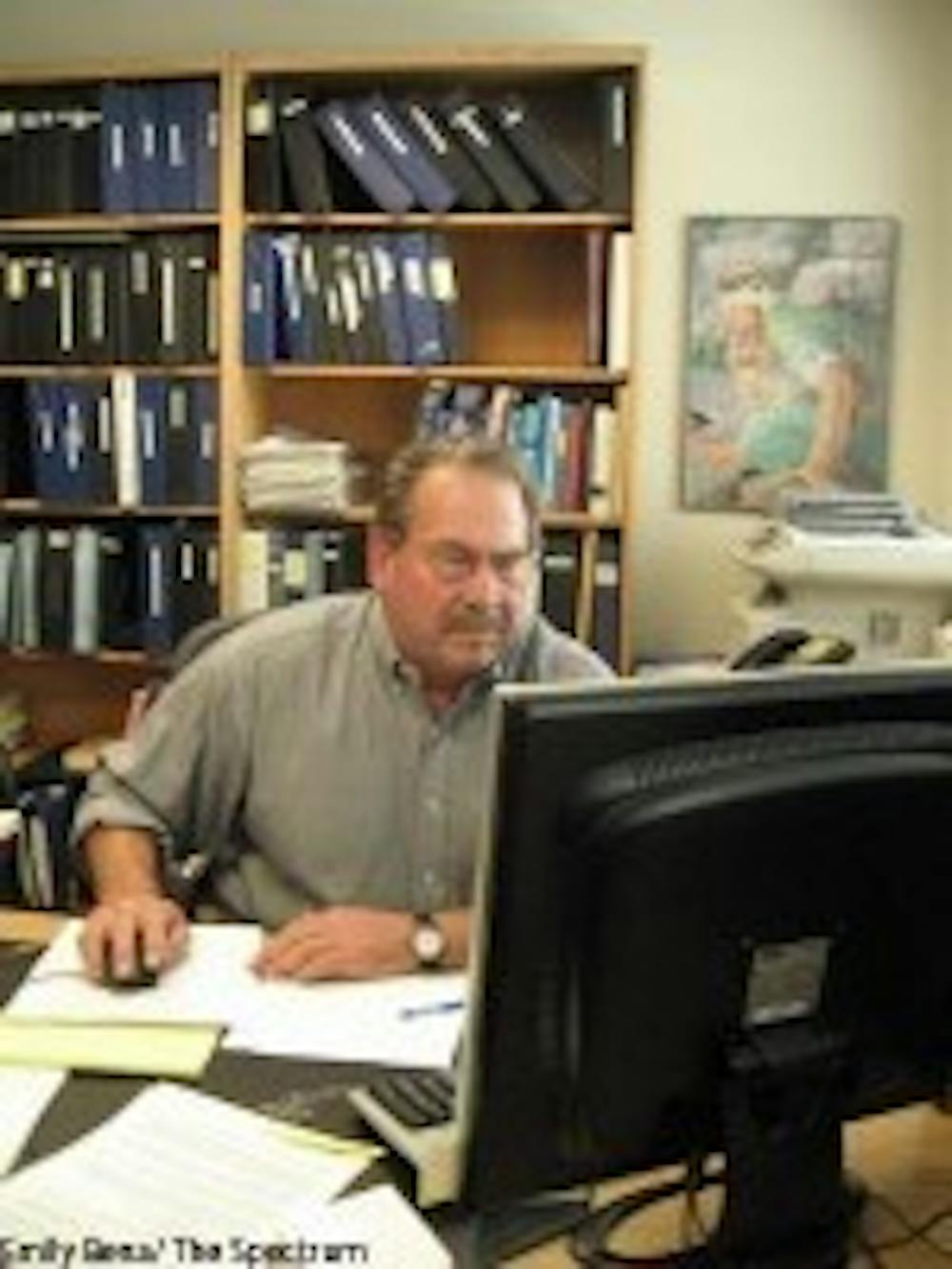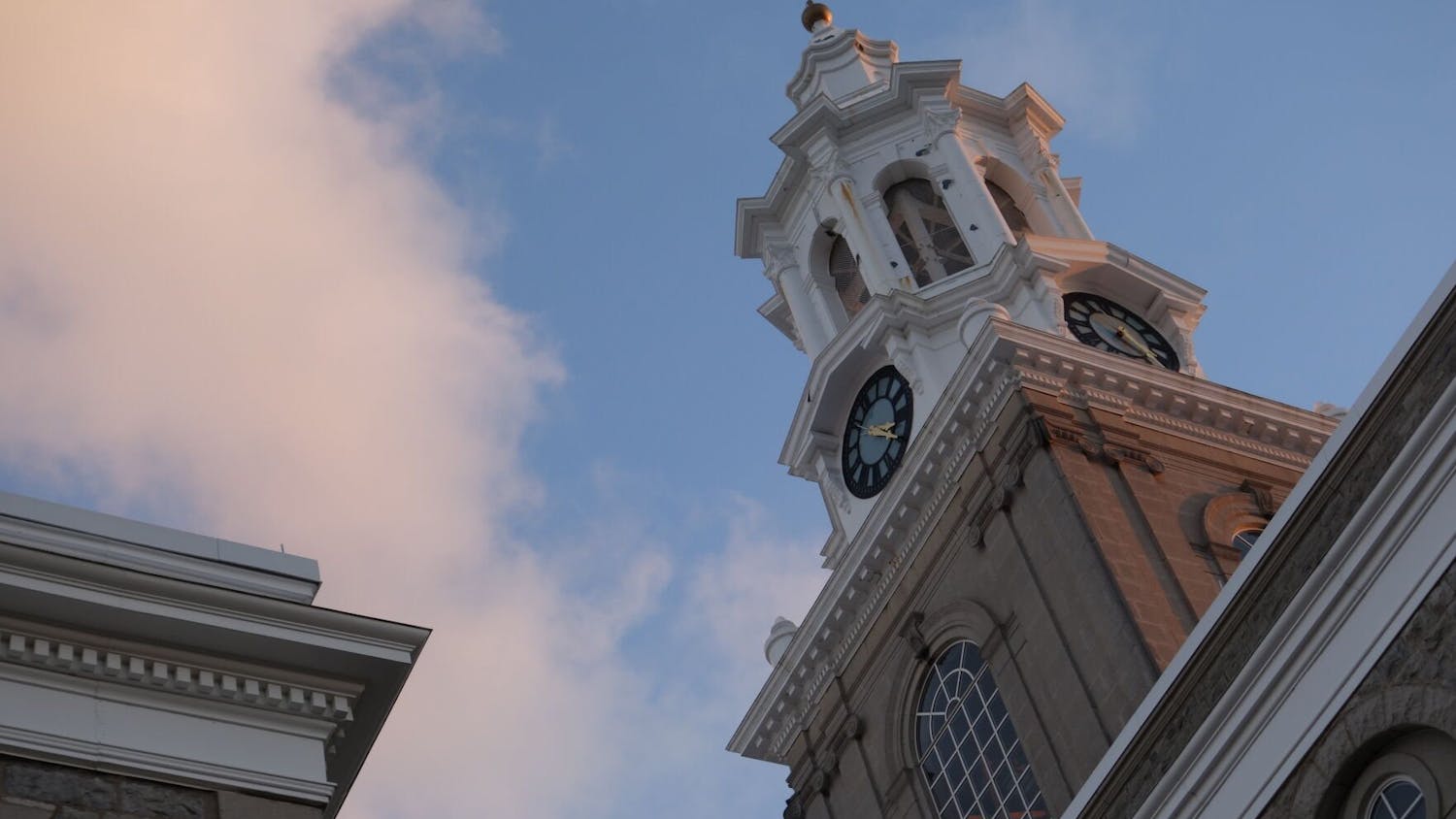February was an exciting time for a remarkable UB professor from the department of communicative disorders and sciences, one whose love for teaching equals his aptitude in the lab.
Donald Henderson recently received the 2006 Outstanding Hearing Conservation Award from the National Hearing Conservation Association at its annual conference in Tampa, Fla.
Although Henderson was initially interested in doing research as a graduate student at the University of Texas, he realized his desire to share information when he had the opportunity to teach a class in Physiological Psychology. It was such a good experience that he has been teaching for the past 40 years.
Henderson and his research group at the university were the first to determine the biological mechanisms through which toxins and noise exposure kill hair cells and damage the organs in the inner ear responsible for transmitting sound to the brain.
"Noise-induced hearing loss (NIHL) is the most common form of hearing loss in the working age population, and it is almost always preventable," Henderson said. "The possibility of developing pharmacological approaches to preventing hearing loss was an interesting and worthwhile problem."
During his work on NIHL, his group made two fundamental discoveries. When the inner ear is exposed to damaging sound, free radical molecules, the actual culprits that damage the inner ear and cause hearing loss, are generated in the cochlea.
"We have recently discovered that aging also established a state of oxidative stress in the inner ear and we are studying how this oxygen stress leads to hearing loss," Henderson said.
Richard Salvi, a colleague of Henderson's for 30 years, focuses on the mechanism involved in drug induced hearing loss, ototoxicity.
"Henderson was one of the first scientists to recognize that it might be possible to use therapeutically useful drugs that reduce the risk of hearing loss," Salvi said.
In addition, Henderson was instrumental in developing a patent for a group of drugs that prevent hearing loss.
"Hearing loss is greatest immediately after a noise exposure," Salvi said.
Although hearing may make a partial or full recovery with seven to 10 days, after that, any damage is typically permanent.
"Some of the drugs used by Dr. Henderson will reduce the amount of permanent noise-induced hearing loss," Salvi said.
Richard Danielson, manager for Audiology and Hearing Conservation for NASA has worked with Henderson since 1984, when he moved to Dallas to study under him at the University of Texas. Danielson currently uses concepts taught by Henderson in his work with astronauts and flight personnel exposed to noise in their work at NASA.
"I first heard Dr. Henderson speak at a conference that was so crowded I had to sit on the floor at the side of the auditorium," Danielson said. "As he built his points with clear explanations and sequential reasoning, the audience was clearly animated with appreciation for his theories."
After hearing Henderson speak, Danielson was inspired to seek him out and work with him.
"I knew I had to find a way to study under him," he said. "Since then, I found how well his explanations broke down complicated data for me to understand at an introductory level."
Danielson said he is proud to be associated with Henderson's lab, which is now on the cutting edge of auditory research.
"I can't think of another lab in the country better suited to research in the effects of noise and possible pharmacologic prevention of noise-related hearing loss than Dr. Henderson's lab at your university," Danielson said.
Danielson also spoke for Henderson's superior skills with students as a research professor.
"Dr. Henderson has demonstrated that he can stimulate a student and research to affect an outstanding education experience," Danielson said. "Dr. Henderson is more than a scientist, professor, and researcher. He is a gentleman, cordial and conscientious about what drives and motivates students in their personal side."





